It’s been a varied month: In addition to working on my studio to better prepare it for recording and webcasts (and I have two such events coming up in December), I’ve created videos for a couple of small, inexpensive modulators, and experimented further with altering the waveforms produced by typical VCO modules – a subject that is the featured article this month.
- featured article: Have a spare filter? Patch it after the VCO and have this second VCF track the VCO’s pitch to alter the waveshapes your VCO produces.
- new videos & posts: Videos on two small, inexpensive modulators, plus another article on chaos.
- course updates: More videos added to the Eurorack Expansion Extended course.
- Patreon updates: Articles on CV processing and generative patching, in addition to my usual extended posts for the new videos I released.
- upcoming events: I am one of the performers at the next Resident Electronic Music event, plus Kim Bjørn and I will be doing an Instagram Live chat and taking questions.
- one more thing: Are you a manufacturer interested in Bluetooth MIDI?
Using an Extra Filter as a Waveshaper
A general topic I’ve been focusing on this year is how to take the standard waveforms produced by typical VCOs and LFOs, and create fresh new variations on them.
The most recent technique I’ve been playing with is patching an extra filter directly after the VCO, and having that new VCF track the VCO’s pitch. This allows the VCF to alter the VCO’s waveform and therefore its harmonics & timbre before it gets sent off to the normal VCF/VCA or wavefolder/LPG patch chain for further treatment. This technique excels in particular at creating vocal-like sounds. Some of you are probably already familiar with this trick, but for those who aren’t, read on.
Since you may want to jump right in and try this out, here is the linked index to the movie above; after it I will share where the inspiration for this came from, and potential ways to extend it:
- 00:00 introduction
- 01:07 the basic patch
- 01:28 phase inversion issue
- 02:20 low pass filter with sawtooth
- 05:00 mixing in the unprocessed wave
- 06:14 low pass filter with pulse wave
- 07:38 high pass filter examples
- 08:54 notch filter examples
- 09:22 bandpass filter examples
- 10:32 alternate filter (Doepfer Wasp)
- 11:24 phase inversion revisited
- 12:18 LFO modulating cutoff
- 13:02 envelope modulating cutoff
- 13:55 VCO modulating cutoff
- 15:15 summary
Basic Application
This idea came from using the Birdkids theBateleur VCO. It features a resonant low pass filter internally patched after its suboctave waveform. At its most basic level, this allows you to tame the natural square wave of the suboctave generator to have fewer, smoother high harmonics, including filtering it all the way down to just its fundamental harmonic.
This technique can be patched together using any VCO and VCF that can track a normal pitch control voltage. I’ve had a lot of success patching a 2 pole multimode VCF after an analog VCO, which is what is demonstrated in the video above.
Increasing the resonance helps you focus on and emphasize a specific band of harmonics, or even a single harmonic: perhaps the fundamental to strengthen the bass; perhaps the second harmonic to add warmth; perhaps the third to emphasize a perfect fifth above the fundamental; perhaps an “odd” harmonic like the 9th or 11th to create an off-kilter interval without having to patch in a second VCO.
Choose the filter mode to based on which harmonics you want to reduce in level – for example, low pass to reduce the high harmonics, or high pass to reduce the lower harmonics. Or, you can use a notch output with minimal resonance to remove a small band of harmonics, creating an ear-catching “hole” in the sound. This approach also helps a single VCO emulate the sound of two VCOs tuned to an interval, tracking each other perfectly.
This added filter is particularly good at creating sounds akin to the voice or acoustic instruments, in addition to new sounds. A resonator-type filter module – such as a triple bandpass, or a filter pair in series or parallel – can modify the VCO’s harmonics in even more interesting ways. Many early electronic instruments and synthesizer keyboards had resonators built in; it’s a practice we’ve gotten away from, but which is still very useful. Another approach is to try a filter with multiple inputs – such as a Steiner-type filter, or a Three Sisters – to mix together multiple waveforms by taking a different range of harmonics from each one.
If your filter has any interesting “quirks” – such as a strengthened fundamental when you overdrive its input, or an unstable warble when you increase its resonance near self-oscillation – these can also add a unique character to your VCO’s sound.
Keep in mind that you can still envelope a waveshaper or a second filter after this VCO/VCF pair to create your normal per-note articulations. I will also often mix in a second waveshape or oscillator to fatten up the sound.
Adding Articulation
The original patch I was using with theBateleur varied its filter’s cutoff using keyboard velocity or the output of a sample & hold triggered by a seqeuncer. You can also patch performance controls such as aftertouch, a mod wheel, or a pressure sensing pad to the cutoff to directly articulate which harmonics are being emphasized while you hold a note. A chaotic modulation sources patched to this extra filter’s cutoff can be used to emulate the “instability” of some older instruments.
In any of these cases, try attenuating this control voltage so it only moves the cutoff across the range of 2-4 harmonics; this will make it sound more like human articulation than a wild, synthetic sweep (that’s what your normal filter is for).
Remember that this second CV needs to be summed with the pitch CV, so that this extra filter tracks the VCO with these added variations. Fortunately, many filters have both a dedicated 1v/octave input as well as a general-purpose modulation input. Otherwise, you can use a simple CV summer or mixer. The precision of this summer or mixer is not as critical as when directly controlling the VCO’s pitch.
It’s Not Just For Sawtooth Waves
Don’t restrict this idea to just simple analog VCOs – definitely try it with complex oscillators, digital wavetable VCOs, and more.
I read recently on a forum where a user complained that their wavetable VCO sounded more like an organ – and indeed, when you don’t modulate a wavetable, the result is the same as using the drawbars on an organ to create a different set of harmonics. The trick is to add life to these harmonics by modulating their mix. Most wavetable VCOs allow you to crossfade between adjacent waveforms, but they pre-choose those waveforms for you (unless you spend some time with an editor). Using this filter-as-waveshaper technique allows you to choose the initial waveform you want, and then create your own variations on it.
And by the way, this technique can also be used with many polyphonic hardware or software synths that include more than one filter in a patch. Use one of the filters after a sound source and have it track the keyboard; then envelope and modulate the additional filter(s) to get your normal sonic variations per note. Start with a serial arrangement of the filters, as this will be most obvious, but you can also try parallel filters for a more subtle effect.
New Videos & Blog Posts
I wrote an article on Chaos Generators for the Elby Designs website, but just learned its URL recently. After an introduction to chaos, it focuses on a pair of Ian Fritz’s chaos module designs that Elby has turned into products. (By the way, I just learned that Ian lives on the other side of the Sandia Mountains from me in New Mexico; I always assumed he lived in Australia…as Freff said years ago in Keyboard magazine, it is a very large world – it just folds together in funny places.)
In addition to the video above on using a filter as waveshaper, I’ve also released module-specific videos for the Zlob Modular Diode Chaos and the Mobula Modular ROTLFO. A second public video using the ROTLFO shows how to massage control voltages to get the desired response in general from modules that might behave differently than you might expect.
Finally, I made public the video I shared with you back in the October newsletter of a presentation I did on wave splicing and crossfading for the New Mexico Control Voltage meetup group.
Modular Courses Updates
Videos on the Zlob Modular Diode Chaos and Mobula Modular ROTLFO modulation sources have been added to the Euroack Expansion: Extended course.
For those who read this far, click here to get $75 off that course through the end of 2020. If you already bought Level 1 or 2 of the Eurorack Expansion course, contact me with your user ID (the email address you log in with), and I will create a custom coupon for you that gives you $75 plus what you already paid for the lower tier courses when you upgrade to the Tier 3 Extended version of the course.
Patreon Updates
If you’re hard core about learning modular synthesis, then please consider subscribing to my Patreon channel. It’s where I first share new ideas ideas I’m playing with, and also where I go into much greater depth than I can with just a video on YouTube etc.
For those who have already subscribed (thank you!) but didn’t have a chance to keep up with my new posts last month, they included:
- Two posts + videos on the Mobula Modular ROTLFO: an overview of the difference wave forms the module is capable of producing, and patch tips on using a utility mixer to bend the range of a controller to match the CV range to the range a module requires, in order to get the result you desire. Both are available to all members.
- Three posts + videos that had the Zlob Diode Chaos at their core, including a thorough overview, a generative patch driven by the Zlob (or a chaos/random module of your choice), and a patching exercise where I show using a saturation/soft clipping module to “compress” the control voltage range produced by a random source such as the Zlob. All three were available to +5v and above members.
- My original post on using an extra filter as a waveshaper, available to +5v and above members.
- +5v and above Patrons were also treated to a fall module clearance sale at preferred prices before I listed them publicly on Facebook. Some items are still available; feel free to make an offer. I’m also looking for an Intellijel Planar 2, Klavis CalTrans, or IME Piston Honda mkIII in exchange (or used, if you’re selling yours).
Upcoming Events
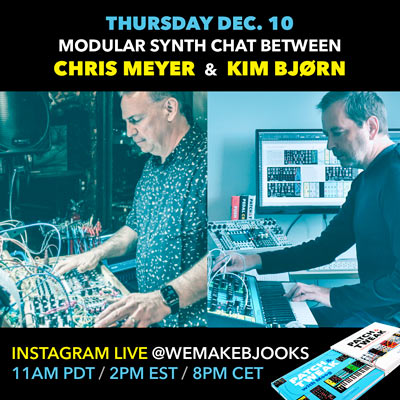
Also, I will be joining Kim Bjørn of Bjooks for an informal live video interview/conversation on the WeMakeBjooks Instagram channel Thursday, December 10, at 11 AM EST, 2 PM PST, and 8 PM CET. Kim and I co-wrote Patch & Tweak, and Kim just released Patch & Tweak with Moog. We will be talking about the two books as well as other topics including modular composition & performance – plus answering your questions from the online chat! I hope you can join us.
One More Thing…
I know a few manufacturers receive this newsletter, so this last bit is for you: Tom White – former long-running president of the MIDI Manufacturers Association – has been consulting with Zhao Yitian of CME (maker of the Xkey Keyboard) about his Bluetooth MIDI or “BLE-MIDI” technology, including his new WIDI Master.
Tom tells me that “Zhao’s developed an inexpensive BLE 5 module (subsystem – not modular synth module) with the firmware for both central and peripheral operation to support connections with or without a host PC, and has optimized the firmware to achieve latency as low as 3ms. He would like to provide the module to other companies for use in their products, and it occurred to me that maybe some modular device makers might be interested in adding BLE-MIDI support (and not interested in developing the expertise to build their own solution).”
If you might be interested, get in touch with me using the contact form at the bottom of this page, and I will put you in contact with Tom and Zhao.
After I get done composing, performing, recording, and editing a new piece of music for Resident, I then need to turn my attention to rewiring my studio to take advantage of a new Allen & Heath QuPac digital mixer. I’m hoping it is going to help automate switching the studio from jamming to recording to creating videos to webcasting performances. I also have another video or two already recorded and waiting to be edited, plus I’m starting to play around with integrating modules with hardware polysynths that have CV inputs. So, lots to talk about in the weeks ahead – as well as some holidays to celebrate!
best regards –
Chris

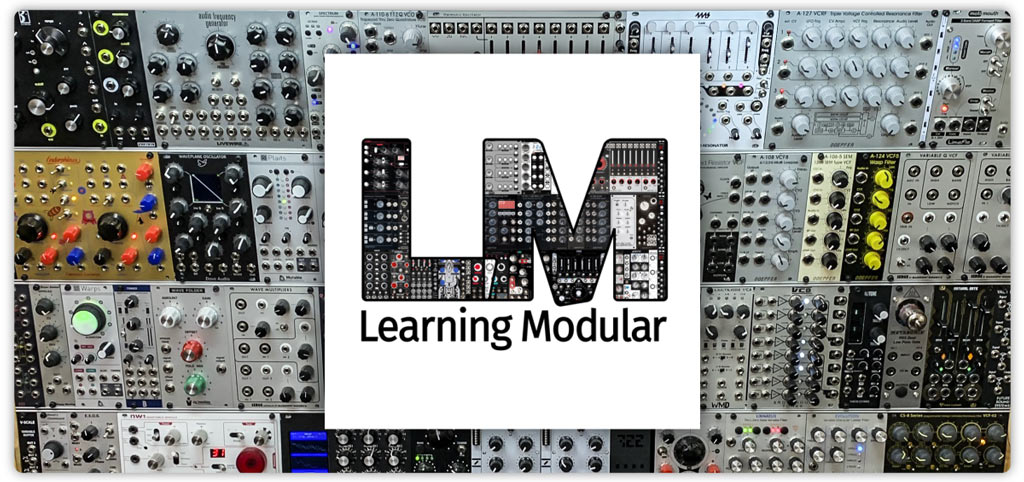
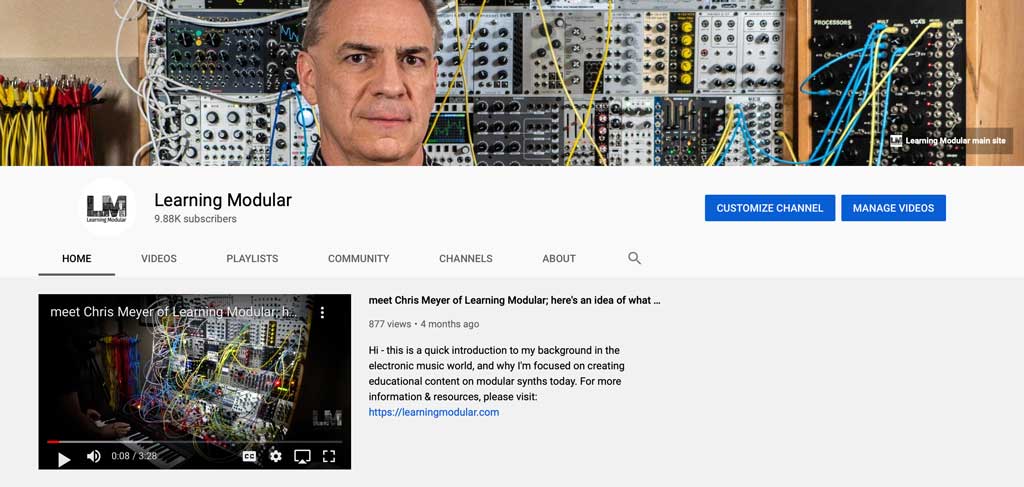
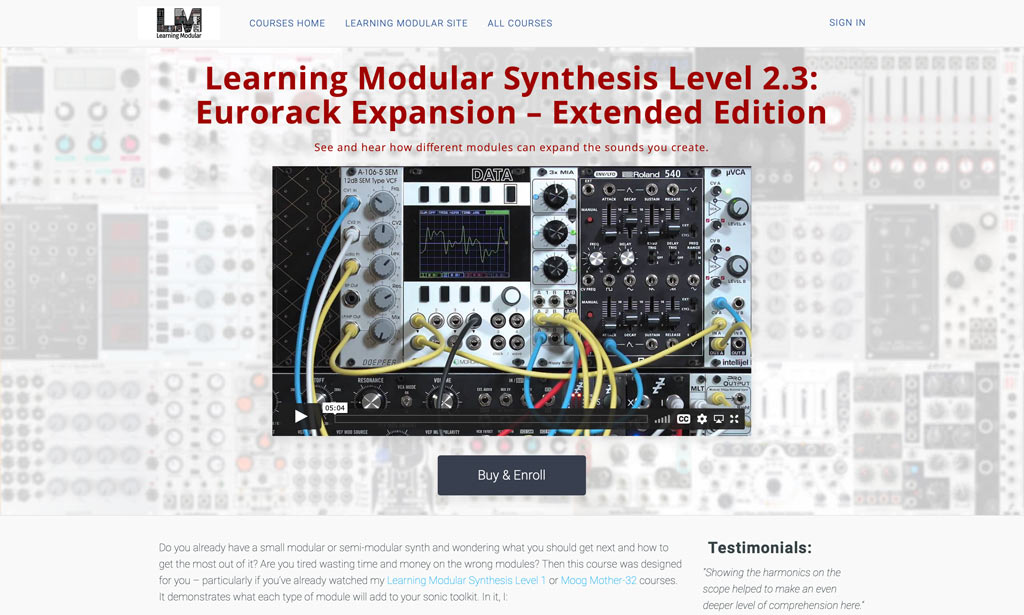
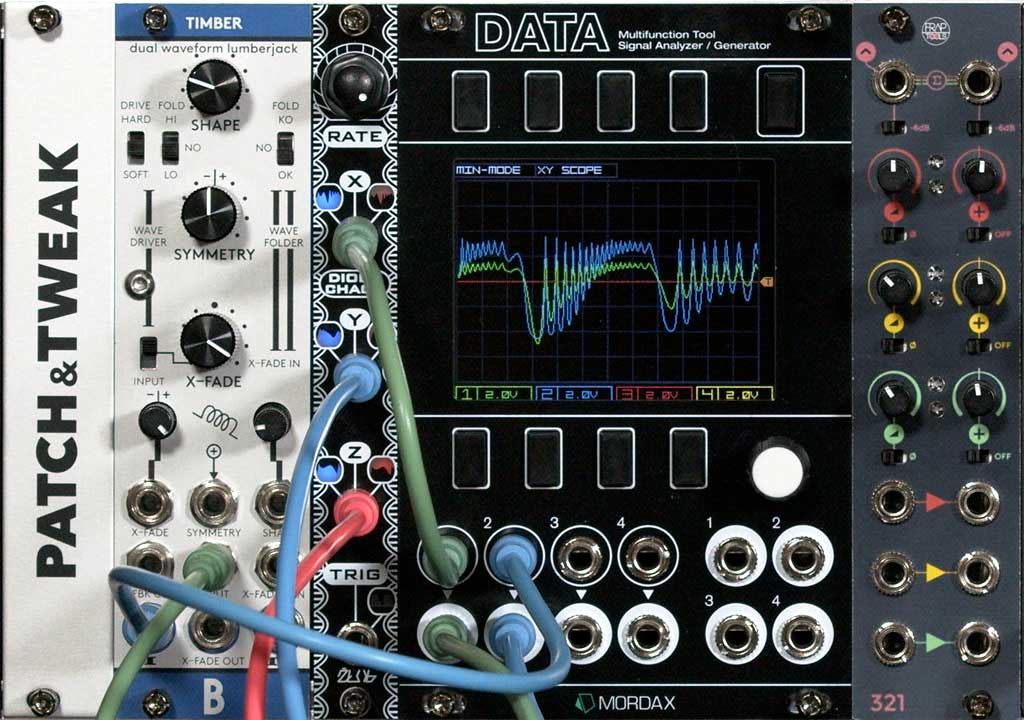

Hey Chris, you’ve probably already thought of this, but once you get set up for webcasting, I think folks might enjoy seeing behind-the-scenes sessions where you prep and explore materials for upcoming performances like the one on Dec 8. Maybe show samples considered and rejected, patches in progress, dead ends, etc. Who knows, you might even get some useful suggestions. It would be fun to see how the sausage gets made, and then watch the finished piece.
Dan
Hi, Dan – that’s a good idea. For my Patrons, I already do a detailed breakdown of what I ended up with, but don’t spend as much time on the dead ends! This piece I’m working on now certainly has been a roller-coaster in terms of “this is working…this is not working…this is working…I appear to have lost my way again…wait, this might work” 😉